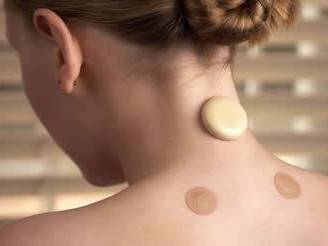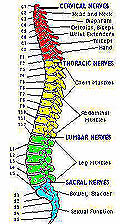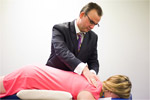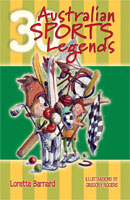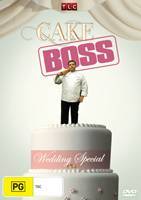Dr. Richard Parkinson Kids and Contact Sports Interview
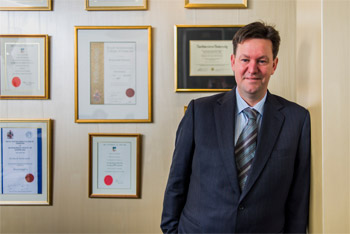
Dr. Richard Parkinson Kids and Contact Sports Interview
Dr. Richard Parkinson is a leading neurosurgeon based in Sydney who has a strong interest in sports-related injuries. He has extensive experience in neurosurgery, particularly minimally invasive fusion surgery. With so much in the news lately regarding sports related injuries, there is a growing concern among many parents who have children who play contact sports on a weekly basis.
Playing sport is a great way for children and young people to have fun, develop friendships, learn new skills, and stay active and healthy. When kids hop on a bike, head to gymnastics class or grab a football, they have little else on their mind besides having fun or winning against the other kids which is how it should be. But it also means it's up to parents, coaches, and doctors to help kids avoid sports-related injuries.
'All kids should be encouraged to play a sport," says Dr Richard Parkinson. 'Unfortunately sometimes accidents happen and the best way to prevent these injuries is for parents to make sure that all necessary precautions are taken such as specific safety equipment to be worn during certain sports," he says.
'The most injury-prone sport appears to be ice hockey, although some girl's sports have a very high incidence of injury such as girl's soccer which has a high rate of head injuries."
In terms of the sheer number of injuries, and an increasing number of injuries in New South Wales, the leader is Rugby League, explains, Dr. Parkinson.
'My focus is usually on professional or reserve grade Rugby League players. Amateur players tend to not come in and see me all that often, generally because they're younger players who tend to recover a bit quicker," says Dr Parkinson. 'At that higher level, the players are bigger, they're faster, the velocity of tackling is harder, and there seems to be more of a directive that they have to put the opposition player down with the first tackle if they can. They're not aiming to just stop them, they're aiming to put them on the ground," he says.
'To lower the risks of childhood injuries when playing any type of sport, it's important to keep it fun and not to encourage any fighting or dangerous habits when on the field. Also it's good to make sure that all players know the rules of the game " what's legal and what's not " as this can also prevent fewer injuries from happening. Communication on the field and being mindful of other players is also necessary to avoid any accidents."
The most common neurosurgical sports injuries are neck and lower back injuries, particularly cervical spine injuries to the neck and to the spinal nerves that supply the arms. They are the ones that commonly require a small surgical operation to fix them, and quite commonly respond very well with surgery.
'It's also very important not to let children play sport if they have an injury or are recovering from one. If they are hurt again during a game it's possible it can lead to an even worse injury," he says.
Dr. Parkinson recommends all his patients try to maintain spine health as much as possible, to reduce the likelihood of spinal injury. 'Preventative activity should be started as early in life as possible."
www.ispine.com.au
Playing sport is a great way for children and young people to have fun, develop friendships, learn new skills, and stay active and healthy. When kids hop on a bike, head to gymnastics class or grab a football, they have little else on their mind besides having fun or winning against the other kids which is how it should be. But it also means it's up to parents, coaches, and doctors to help kids avoid sports-related injuries.
'All kids should be encouraged to play a sport," says Dr Richard Parkinson. 'Unfortunately sometimes accidents happen and the best way to prevent these injuries is for parents to make sure that all necessary precautions are taken such as specific safety equipment to be worn during certain sports," he says.
'The most injury-prone sport appears to be ice hockey, although some girl's sports have a very high incidence of injury such as girl's soccer which has a high rate of head injuries."
In terms of the sheer number of injuries, and an increasing number of injuries in New South Wales, the leader is Rugby League, explains, Dr. Parkinson.
'My focus is usually on professional or reserve grade Rugby League players. Amateur players tend to not come in and see me all that often, generally because they're younger players who tend to recover a bit quicker," says Dr Parkinson. 'At that higher level, the players are bigger, they're faster, the velocity of tackling is harder, and there seems to be more of a directive that they have to put the opposition player down with the first tackle if they can. They're not aiming to just stop them, they're aiming to put them on the ground," he says.
'To lower the risks of childhood injuries when playing any type of sport, it's important to keep it fun and not to encourage any fighting or dangerous habits when on the field. Also it's good to make sure that all players know the rules of the game " what's legal and what's not " as this can also prevent fewer injuries from happening. Communication on the field and being mindful of other players is also necessary to avoid any accidents."
The most common neurosurgical sports injuries are neck and lower back injuries, particularly cervical spine injuries to the neck and to the spinal nerves that supply the arms. They are the ones that commonly require a small surgical operation to fix them, and quite commonly respond very well with surgery.
'It's also very important not to let children play sport if they have an injury or are recovering from one. If they are hurt again during a game it's possible it can lead to an even worse injury," he says.
Dr. Parkinson recommends all his patients try to maintain spine health as much as possible, to reduce the likelihood of spinal injury. 'Preventative activity should be started as early in life as possible."
www.ispine.com.au
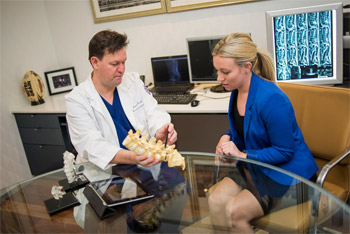 Interview with Dr. Richard Parkinson
Interview with Dr. Richard Parkinson
Question: What are the common injuries you see for children and young people?
Dr. Richard Parkinson: Concussion is quite a common problem, particularly after contact sports. Neck injuries are also quite common particularly sports such as gymnastics and contact sports.
Question: How can parents help prevent these injuries happening?
Dr. Richard Parkinson: I think there needs to be a solid foundation, careful coaching and an understanding that when these injuries occur that they need to be carefully assessed. There is no hard evidence that head protection will help prevent concussion at this time.
Question: What contact sports are the most common for these types of injuries?
Dr. Richard Parkinson: The most injury-prone sport appears to be ice hockey, although some girl's sports have a very high incidence of injury such as girls soccer which has a high rate of head injuries. In terms of the sheer number of injuries, and an increasing number of injuries in New South Wales, the leader is Rugby League.
Question: How are these injuries treated?
Dr. Richard Parkinson: Usually a concussion involves taking the player off for an appropriate period of time until the injury has settled down on its own.
Question: Is it possible to prevent these injuries occurring whilst still encouraging children to play sport?
Dr. Richard Parkinson: To lower the risks of childhood injuries when playing any type of sport, it's important to keep it fun and not to encourage any fighting or dangerous habits when on the field. Also it's good to make sure that all players know the rules of the game " what's legal and what's not " as this can also prevent fewer injuries from happening. Communication on the field and being mindful of other players is also necessary to avoid any accidents.
Question: What types of safety equipment do you suggest be worn for contact sports?
Dr. Richard Parkinson: As I had said there is no randomised evidence that suggests that head protection is valuable but I think a soft helmet in player with a history of concussion is reasonable.
Question: Which contact sport has the highest injuries associated with it?
Dr. Richard Parkinson: Probably the two codes of rugby, and also fighting type sports such as martial arts.
Question: Is there a certain contact sport you wouldn't let your son/daughter play?
Dr. Richard Parkinson: No, as long as they did not suffer any injuries that required reassessment.
Question: How can we maintain spine health? Are there exercises that can be done to promote a strong and healthy spine?
Dr. Richard Parkinson: Important is core strength, regular physical conditioning, warm-ups, and range of movement exercises.
Interview by Brooke Hunter
Dr. Richard Parkinson: Concussion is quite a common problem, particularly after contact sports. Neck injuries are also quite common particularly sports such as gymnastics and contact sports.
Question: How can parents help prevent these injuries happening?
Dr. Richard Parkinson: I think there needs to be a solid foundation, careful coaching and an understanding that when these injuries occur that they need to be carefully assessed. There is no hard evidence that head protection will help prevent concussion at this time.
Question: What contact sports are the most common for these types of injuries?
Dr. Richard Parkinson: The most injury-prone sport appears to be ice hockey, although some girl's sports have a very high incidence of injury such as girls soccer which has a high rate of head injuries. In terms of the sheer number of injuries, and an increasing number of injuries in New South Wales, the leader is Rugby League.
Question: How are these injuries treated?
Dr. Richard Parkinson: Usually a concussion involves taking the player off for an appropriate period of time until the injury has settled down on its own.
Question: Is it possible to prevent these injuries occurring whilst still encouraging children to play sport?
Dr. Richard Parkinson: To lower the risks of childhood injuries when playing any type of sport, it's important to keep it fun and not to encourage any fighting or dangerous habits when on the field. Also it's good to make sure that all players know the rules of the game " what's legal and what's not " as this can also prevent fewer injuries from happening. Communication on the field and being mindful of other players is also necessary to avoid any accidents.
Question: What types of safety equipment do you suggest be worn for contact sports?
Dr. Richard Parkinson: As I had said there is no randomised evidence that suggests that head protection is valuable but I think a soft helmet in player with a history of concussion is reasonable.
Question: Which contact sport has the highest injuries associated with it?
Dr. Richard Parkinson: Probably the two codes of rugby, and also fighting type sports such as martial arts.
Question: Is there a certain contact sport you wouldn't let your son/daughter play?
Dr. Richard Parkinson: No, as long as they did not suffer any injuries that required reassessment.
Question: How can we maintain spine health? Are there exercises that can be done to promote a strong and healthy spine?
Dr. Richard Parkinson: Important is core strength, regular physical conditioning, warm-ups, and range of movement exercises.
Interview by Brooke Hunter
Have You Seen This?
MORE

